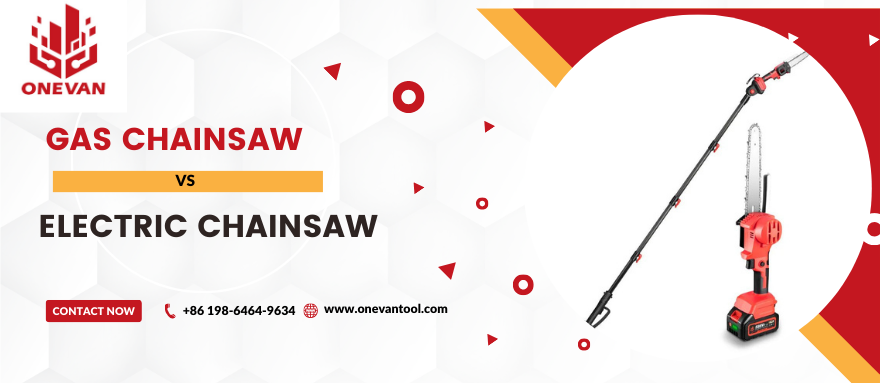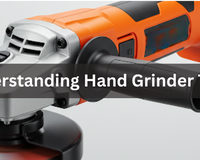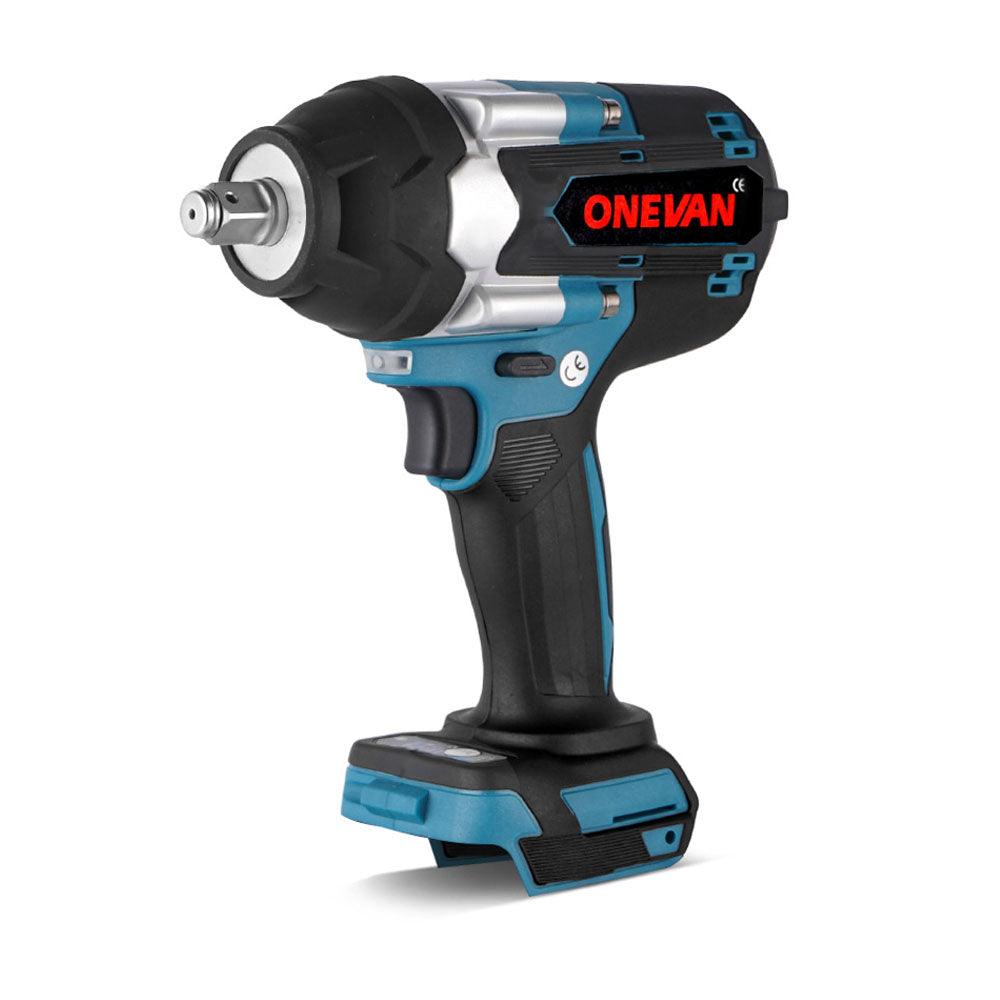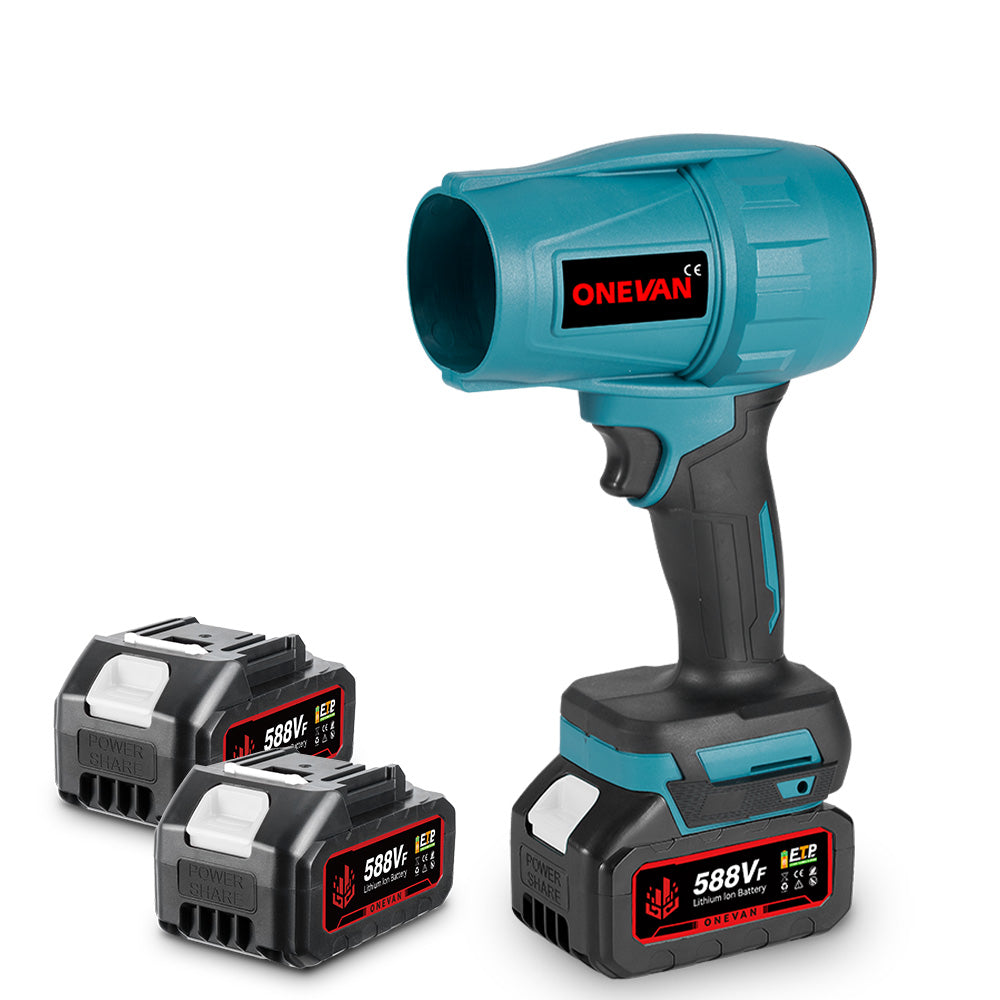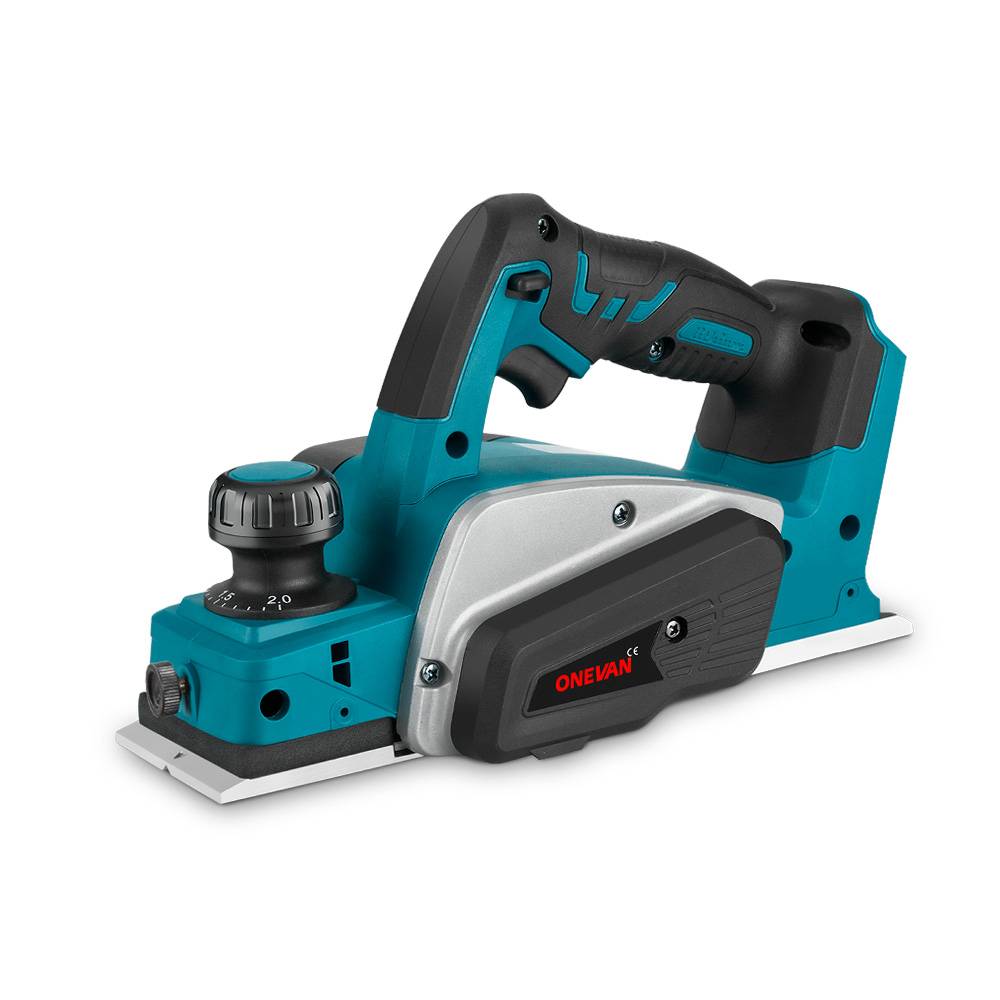There is a massive variety of electric power tools. Therefore, more and more people think an electric chainsaw is a great alternative to a gas chainsaw.
New electric models have batteries that last longer, and the cutting performance is far better than that of some gas-powered models. However, gas chainsaws are still more effective in some ways.
Electric chainsaws have gained significant credibility in professional settings. A lot of professionals are using them. Most major manufacturers are building them: Husky, Stihl, Makita, and Dewalt— all the major players. They use traditional bars and Oilers, and they're cool. You don't have all the fuss and muss.
Understanding the strengths and weaknesses of both electric and gas chainsaws will help beginners to make wise decisions.
1. Different Types of Chainsaws

Chainsaws come in three main power options:
- Electric
- Battery
- Gasoline (combustion engine)
Let's explore their key characteristics:
Gas Chainsaw
- Fuel type: Gasoline
- Pros: Chain saws are known for being super useful because they are available in different sizes. For instance, small tools can be used for homeowners, and bigger chainsaws for heavy-duty activities. These power tools are multi-tasker and perform a variety of cutting tasks. Even the lightweight saws are strong enough to cut firewood or help with planting new trees. Some saws also come with fancy features like heated handles to keep you warm.
- Cons: Requires gasoline and oil for operation. Gas chainsaws are heavier and louder compared to electric options.
Battery Chainsaw
- Fuel type: Battery
- Pros: Lightweight and easy to handle, ideal for amateur and domestic woodcutters. Perfect for cutting small trees and firewood. Low maintenance compared to gas chainsaws.
- Cons: Lower power output compared to gas chainsaws, not suitable for professional or heavy-duty work. Battery life can be a limiting factor.
Electric Chainsaw
- Power source: Electric cord
- Pros: Corded electric chainsaws typically offer more power than their battery-powered counterparts and can handle medium-duty tasks. Corded electric chainsaws are more powerful than cordless ones and are suitable for average usage and tasks. Electric chainsaws are generally less noisy than gas chainsaws. Cordless electric tools are more flexible than corded ones because there is no extension cord involved.
- Cons: Requires a nearby power source or limits mobility with extension cords. May not be as powerful as some gas chainsaws for heavy-duty jobs.
2. Gas Chainsaw vs. Electric Chainsaw: Power and Performance
The Power and Performance of Gas Chainsaws
When compared to electric chainsaws, gas chainsaws dominate in terms of raw power. They typically boast horsepower (HP) ratings ranging from 2 hp for lightweight homeowner models to a staggering 8-hp+ for professional-grade saws. This translates to a significant advantage when tackling:
- Thicker logs: Higher HP allows gas chainsaws to power through logs with larger diameters with less bogging down.
- Denser wood: Species like hardwoods require more power to cut efficiently. Gas chainsaws provide the muscle needed for clean cuts in challenging materials.
Cutting Speed:
The only difference is the gas chainsaws have higher horsepower which results in faster cutting speeds. Chains can go as fast as 20 meters per second or 65 feet per second in some models. This fast-cutting pace makes the gas chainsaws very efficient in even the most extensive tasks.
Technical Details:
- Engine displacement: Engine displacement, measured in cubic centimeters (cc), indicates the engine's volume and typically correlates with the amount of power it can produce. Professional models can have displacements exceeding 80cc.
- Bar length: Gas chainsaws can accommodate longer bars (up to 24 inches or more) compared to electric models.
- Chain pitch: Gas chainsaws typically utilize a chain pitch of 3/8" or .325".
Suitability for Heavy-Duty Tasks:
This optimum power and cutting speed make gas chainsaws an attractive choice for heavy-duty tasks like:
- Felling large trees: With enough horsepower, gas chainsaws can handle bringing down sizeable trees for firewood or land clearing.
- Limbing and bucking thick logs: The higher power allows for effortless cutting through thick branches and sectioning large logs for processing.
- Professional forestry work: Professional models often have features like heated handles for extended use in cold weather, making them ideal for long days of forestry work.
The Power and Performance of Electric Chainsaws
Power Adequacy:
As for power, electric chainsaws have advanced a great deal, however, they cannot be as powerful as gas chainsaws. The power of their motor is usually expressed in watts or amps (W or A); the higher the value the higher the power.
- Casual Use: For operations such as pruning trees, cutting firewood for everyday use, or clearing up debris after a storm, electric chainsaws with a power output of about 1500W are quite suitable.
- Extended Use: For extended-use jobs such as processing a large volume of firewood or cutting through tougher materials, higher-rated electric chainsaws (2000W and above) are beneficial, though they may still experience performance drops with continuous use due to motor heating.
Technical Details:
- Motor type: Electric chainsaws incorporate brushless motors as they provide better efficiency and longer life span than brushed motors.
- Amp rating: A higher amp rating means the motor can deliver more power as compared to the one with a lower amp rating.
- Bar length: Traditionally, electric chainsaws have sported shorter bars than gas chainsaws, typically ranging from 12 to 18 inches. However, recent advancements have introduced electric models with bar lengths that approach those of gas variants, enhancing their utility for a broader range of tasks.
Performance Consistency:
Electric chainsaws are different from gas chainsaws which operate at a fairly steady power level, electric chainsaws have some variations in their performance. This is because:
- Electric motors: The motor power consumption increases when the load is high and this may result in a slightly reduced cutting speed.
- Battery-powered models: With the battery capacity reducing, there is less power to be supplied to the motor and, therefore, the cutting performance reduces steadily.
Advantages:
- Lighter weight and quieter operation: Electric chainsaws are usually less heavy and less noisy than gas chainsaws; they are easy to control and do not annoy the neighbors.
- Lower maintenance: As for maintenance, electric chainsaws require minimal maintenance; regular cleaning and blade sharpening are essential..
3. Gas Chainsaw vs. Electric Chainsaw: Portability and Mobility
The weight of the chainsaw, its size, and its portability matter the most when selecting the best chainsaw. Here's a breakdown of how gas and electric chainsaws fare in these aspects: We have explained everything in minute detail:
Gas chainsaws
Portability:
Bulkier and heavier: Gas chainsaws are often larger and heavier than electric chainsaws because they have engines and fuel tanks. This can also prove to be cumbersome to transport and maneuver around, especially for individuals with low muscle strength.
Fuel and oil considerations: Gas chainsaws carry fuel and oil, which increases their weight and the challenge of transportation.
Mobility:
Cordless Mobility: Gas chainsaws, being cordless, offer greater flexibility than corded electric chainsaws, as they are not restricted by the proximity to a power outlet.Moving within the working space is not a constraint, as there are no issues with cords or short reaches.
Terrain: No need to be connected to a power source and, therefore, can cover rough ground.
Electric Chainsaws
Lighter and more compact: The cordless chainsaws are usually lighter and more compact compared to the gas chainsaws, thus easier to transport around. This is very beneficial for people who have low strength or for people who operate in confined areas.
No fuel or oil needed: Electric chainsaws do not require the carrying of fuel and oil. Thus, they reduce weight and ease portability.
Corded vs. Battery-powered:
Corded: Corded electric chainsaws are extremely convenient. However, the attached cord affects the freedom of movement. So on a serious note, it will be pretty challenging for you to carry such a tool everywhere. You can say, it is a big disadvantage.
Battery-powered: Battery-powered electric chainsaws serve the same purpose. However, later, takes advantage. A charged battery means freedom of work and space. Nevertheless, battery life could be an issue to enhance usage.
4. Gas Chainsaw vs. Electric Chainsaw: Maintenance and Upkeep
Gas Chainsaws
Gas chainsaws need more regular and complicated servicing than electric chainsaws. Following these steps will help your gas chainsaw remain in excellent condition.
Sharpening Chains: Dull chains make cutting difficult, thereby placing unnecessary stress on the engine. After several uses or depending on usage and cutting, you should sharpen your chain frequently. You can have a professional do it, or you can file your chain with a sharp file.
Replacing Spark Plugs: Worn-out plugs become ineffective as far as igniting fuel is concerned, so they need replacement when necessary. Periodically check the spark plug for signs of wear out; also, replace it after 25-50 hours of operation.
Fuel And Oil Management: Important info for gas chainsaws! Mixing fuel is key. Follow the chainsaw manual for the right mix of gas and oil. This keeps your chainsaw running strong and lasts a long time. Before starting, check the oil tank. If it's low, top it up with fresh oil. Remember, the wrong fuel or low oil can make your chainsaw vulnerable.
Electric Chainsaws
Unlike gas chainsaws, however, Electric chainsaws require less maintenance compared to their gas counterparts, but it is still important to regularly clean, lubricate, and sharpen the chain for optimal performance. Nonetheless, there is still some basic care that should be observed for flawless results: However, there are still some important steps that one should follow to get the best results:
Cleaning and Lubricating Chain: Just like gas chainsaws, it is crucial to clean and lubricate the chain to achieve clean cutting without much wear. This entails removing dust and debris from the chain saw’s chain by using a wire brush, bar, and chain oil.
Chain Sharpening: Sharpening the teeth is quite critical, it is pretty similar to a gas lawnmower. For efficiency and safety, it is critical to maintain a sharp chain on your chainsaw, ensuring clean and effortless cuts. Follow the chainsaw manufacturer's instructions manual to sharpen correctly.
5. Gas Chainsaw vs. Electric Chainsaw: Noise and Environmental Impact
Noise and environmental issues are the two critical parameters before choosing a chainsaw. Below, you will read two main types:
Gas Chainsaws
Gas chainsaws tend to produce more noise than electric chainsaws, often exceeding 100 dB during operation. Therefore, it is quite dangerous to nearby residents and dangerous to the operator's ear. Also, gas chainsaws produce harmful exhaust fumes, including hydrocarbons, nitrogen oxides, and carbon monoxide, that contribute to global warming.
Electric Chainsaws
Electric chainsaws come with several benefits. For instance, you will experience low noise levels and direct emissions. Ultimately, you are contributing to a smaller environmental footprint when compared to gas chainsaws. Electric chainsaws have average noise levels ranging from 85-95 dB, which is quieter than gas models but still requires hearing protection during extended use.
6. Gas Chainsaw vs. Electric Chainsaw: Cost
The Cost of Gas Chainsaws
|
Category |
Description |
Cost |
|
Initial Purchase Price |
Varies depending on brand, power, bar length, and features. |
$150 - $1000 |
|
\ |
* Factors Affecting Price * \ |
* Horsepower (higher HP = higher price) |
|
\ |
\ |
* Bar Length (longer bars = higher price) |
|
\ |
\ |
* Features (heated handles, auto oilers, etc.) |
|
\ |
* Fuel \ |
Depends on gas prices and the chainsaw model's fuel consumption. |
|
* Two-Cycle Engine Oil |
Varies by brand and size (expect $10-$20 per bottle, lasts several uses). |
~$10-$20 per bottle |
|
* Maintenance Supplies |
Air filters, sharpening files/guides, bar, and chain oil. |
Relatively low, adds up over time |
|
* Professional Maintenance |
Spark plug replacement, and carburetor adjustments (if needed). |
Varies by task and labor rates |
Cost of Electric Chainsaws
|
Category |
Description |
Cost |
|
Initial Purchase Price |
Varies depending on brand, power (wattage), bar length, and features. |
$100 - $500 |
|
* Factors Affecting Price * |
* Power (higher wattage = higher price) |
* |
|
|
* Bar Length (longer bars = higher price) |
* |
|
|
* Features (corded vs. battery, additional features) |
* |
|
Ongoing Costs |
|
|
|
* Electricity |
Depends on electricity rates and the chainsaw model's power consumption. |
Generally low cost per use (varies) |
|
* Replacement Battery (Battery-powered models only) |
Varies by battery capacity and brand. |
$50 - $200+ |
|
* Maintenance Supplies |
Bar and chain oil, sharpening files/guides (similar to gas chainsaws). |
Relatively low, adds up over time |
7. Gas Chainsaw vs. Electric Chainsaw: User Experience and Safety
Gas Chainsaws
Gas chainsaws offer superior power and cutting performance, ideal for tackling tough jobs. However, their user experience can be more demanding. The heavier weight and stronger vibrations require more physical exertion, especially for extended use. Additionally, gas chainsaws typically have a steeper learning curve. Starting and operating them safely requires proper technique and familiarity with fuel mixing and maintenance procedures.
However, the higher power and potential for kickback underlines the fact that the operator should be wearing some form of personal protective clothing and equipment such as chaps, gloves, safety glasses, and ear protection.
Electric Chainsaw
Electric chainsaws offer a more user-friendly experience. Their lighter weight and reduced vibration make them easier to handle, particularly for less experienced users. Starting and operating them is typically simpler, often involving a simple on/off switch.
While electric chainsaws generally have lower kickbacks due to their motor design, safety should not be taken lightly. Proper PPE is still crucial to prevent injuries from chain slip or accidental contact. Additionally, corded electric chainsaws can be a tripping hazard, requiring careful cord management. Battery-powered models eliminate the cord issue but require keeping spare batteries charged for extended use.
8. Gas Chainsaw vs. Electric Chainsaw: Durability and Lifespan
Gas Chainsaw
Gas chainsaws are known for being durable and able to withstand pressures and strains. They are excellently built with top-notch parts that can endure heavy duties and tough cutting circumstances. To ensure your gas-powered chainsaw remains functional for a longer period, you must:
- Regularly clean it
- Change its air filter
- Sharpen the chain
- Replace its spark plug
- And mix the fuel properly.
They can be used for twenty years if cared for well, making them worth buying.
Electric Chainsaw
While electric chainsaws generally have fewer mechanical parts subject to wear than gas models, their lifespan can vary significantly depending on the quality of construction, frequency of use, and adherence to maintenance guidelines.
Their electric motors, though good, are not built with the same capacity to run for long hours as the gas engines. Nevertheless, for those who will only use the chainsaws for trimming or light cutting, then the electric chainsaws are the perfect tools to use. The durability of the electric chainsaws is mainly determined by the motor and battery. However, it is important to adhere to the manufacturer’s recommendations regarding usage and storage.
9. Selecting the Right Chainsaw Size for Your Cutting Task
The size of a chainsaw, measured by the length of its cutting bar, is crucial for tackling different cutting tasks effectively. We have mentioned how different tasks influence chainsaw size selection, with recommendations for suitable ONEVAN chainsaw:
The Right Size Chainsaw for Home Yard Maintenance
A lightweight chainsaw is a suitable choice for home yard maintenance tasks. For instance, you can effortlessly execute tasks like trimming branches, cutting small trees (up to 8 inches in diameter), and pruning shrubs.
- Recommended Chainsaw Size: 14-16 inches
The Right Size Chainsaw for Professional Forestry Work
Forestry work usually includes cutting down big trees, cutting logs, and removing large branches from the trees. These tasks require powerful chainsaws due to the force that is needed to cut through the wood.
- Recommended Chainsaw Size: 18-24 inches or higher
The Right Size Chainsaw for Occasional Tree Trimming
For occasional pruning of medium-sized branches that are up to 12 inches in diameter, power and maneuverability are advised.
- Recommended Chainsaw Size: 16-18 inches
- Suitable ONEVAN Chainsaw: ONEVAN Brushless Electric Chainsaw's cutting diameter (30cm or roughly 12 inches) is a good choice for trimming tasks. However, you can get a larger model for thicker branches.
The Right Size Chainsaw for Large-Scale Land Clearing
Large areas of brush and small trees are generally dense and difficult to clean. You need a powerful chainsaw with a long bar for seamless cutting.
- Recommended Chainsaw Size: 20-24 inches or higher
The Right Size Chainsaw for DIY Projects and Crafts
Small projects such as cutting lumber for firewood processing, and a small and easy-to-maneuver chainsaw can be quite productive.
- Recommended Chainsaw Size: 12-14 inches
- Suitable ONEVAN Chainsaw: ONEVAN Brushless Electric Chainsaw's has compact size and lightweight design. It is fairly suitable for small DIY projects.
The Right Size Chainsaw for Cutting Firewood
Cutting firewood needs a mid-sized chainsaw. For average firewood (around 10-12 inches in diameter) is recommended.
- Recommended Chainsaw Size: 16-18 inches
- Suitable ONEVAN Chainsaw: The ONEVAN Brushless Electric Chainsaw is good for cutting small firewood. Similarly, for thick trees, it is recommended to buy a large model.
The Right Size Chainsaw for Storm Cleanup
Storm cleanup is one of the daunting tasks. Post-storm cleaning including removing branches, small and large, trees, and debris. In this case, since the tree is quite large, a more powerful chainsaw with excellent maneuverability is paramount.
- Recommended Chainsaw Size: 16-18 inches
- Suitable ONEVAN Chainsaw: The ONEVAN Brushless Electric Chainsaw’s features such as the telescoping pole and multi-angle adjustments are handy when dealing with storm cleanup.
10. Conclusion
The choice between gas and electric chainsaws hinges on the specific requirements of the cutting task, personal preference, and environmental considerations. Gas chainsaws, with their superior power and mobility, are ideal for heavy-duty tasks and professional forestry work. They accommodate longer bars, support more intensive use, and come in high-power models, but at the cost of higher noise levels, emissions, and maintenance requirements. Electric chainsaws, on the other hand, offer a more environmentally friendly option with lower noise levels and maintenance. They are better suited for lighter, domestic tasks, and their evolving technology now presents models with power outputs approaching those of gas chainsaws. Ultimately, the decision should factor in the nature of the work, desired mobility, maintenance capability, and environmental impact. Whether for occasional yard maintenance or professional lumberjacking, there is a chainsaw that fits the bill.
11. FAQ
1. What is the life expectancy of an electric chainsaw?
The lifespan of an electric chainsaw depends on how often it's used and the level of care and maintenance it receives. In general, electric chainsaws will not be as durable as gas chainsaws. If well maintained, a standard electric chainsaw can be very reliable for several years, especially for part-time use; however, for frequent or intense use, For frequent or heavy-duty use, a gas chainsaw may be the preferred choice due to its greater power and durability.
2. Which is better, an electric or petrol chainsaw?
Choosing between an electric and petrol (gas) chainsaw depends on your needs. Here's a quick guide:
Electric Chainsaw:
3. Are corded chainsaws worth it?
Corded chainsaws are recommended when portability and noise factors are a major concern. These are less noisy and lighter as compared to the gas-powered chainsaws and as such are suitable for minor tasks in the home or the garden. However, the power and the time of use are restricted by the cord length of the device.
4. Are electric chainsaws as good as gas ones?
The performance as mentioned above depends on the type of task and area. For occasional, lighter tasks, electric chainsaws offer more convenience and sufficient power compared to their gas counterparts. Simultaneously, gas chainsaws are known for maximum performance. They offer numerous advantages; for instance, noiseless operation, and convenient controls. On the other hand, gas chainsaws excel in cutting power and performance for laborious tasks.
5. What's the best chainsaw for home use?
The best chainsaw for home use depends on what kind of job you want to accomplish.
- Small jobs (trimming branches, cutting firewood): A lightweight electric chainsaw with a 14-16 inch bar length is a good choice.
- Larger jobs (felling small trees, cutting thicker logs): A gas chainsaw with a 16-18-inch bar length can be pretty effective.
6. What is a good-sized chainsaw for a homeowner?
Most homeowners start with a 14–18-inch chainsaw. This is a good blend of power and maneuverability. It means you can effectively handle tasks like branch pruning and firewood chopping.
7. What to know when buying a chainsaw?
Here are some key factors to consider when buying a chainsaw:
User-friendliness: Seek features such as effortless initiation, convenient controls, and an ergonomic handle.
Power requirements: Take into account the nature of the tasks you intend to perform with the chainsaw and select one that possesses sufficient power.
Safety features: Seek a chainsaw equipped with an automated chain brake, hand guard, and additional safety features.
Purpose: Align the functionality of the chainsaw with the specific activities you intend to perform.
8. What size chainsaw is most versatile?
The best size of chainsaw depends on the most frequent application. A chainsaw with a 16-18-inch bar length is enough powerful to cut down medium-sized trees and not too big to control when trimming branches.
9. What is the most popular chainsaw bar length?
The standard size of the bar for homeowner chain saws is 16-18 inches in length. This size offers enough cutting capacity for most home applications.
10. What size chainsaw do most loggers use?
A professional logger usually employs a bigger and more powerful chainsaw than the homeowner. In the logging industry, the chainsaws are equipped with bars longer than 20 inches to enable them to cut through big logs.

